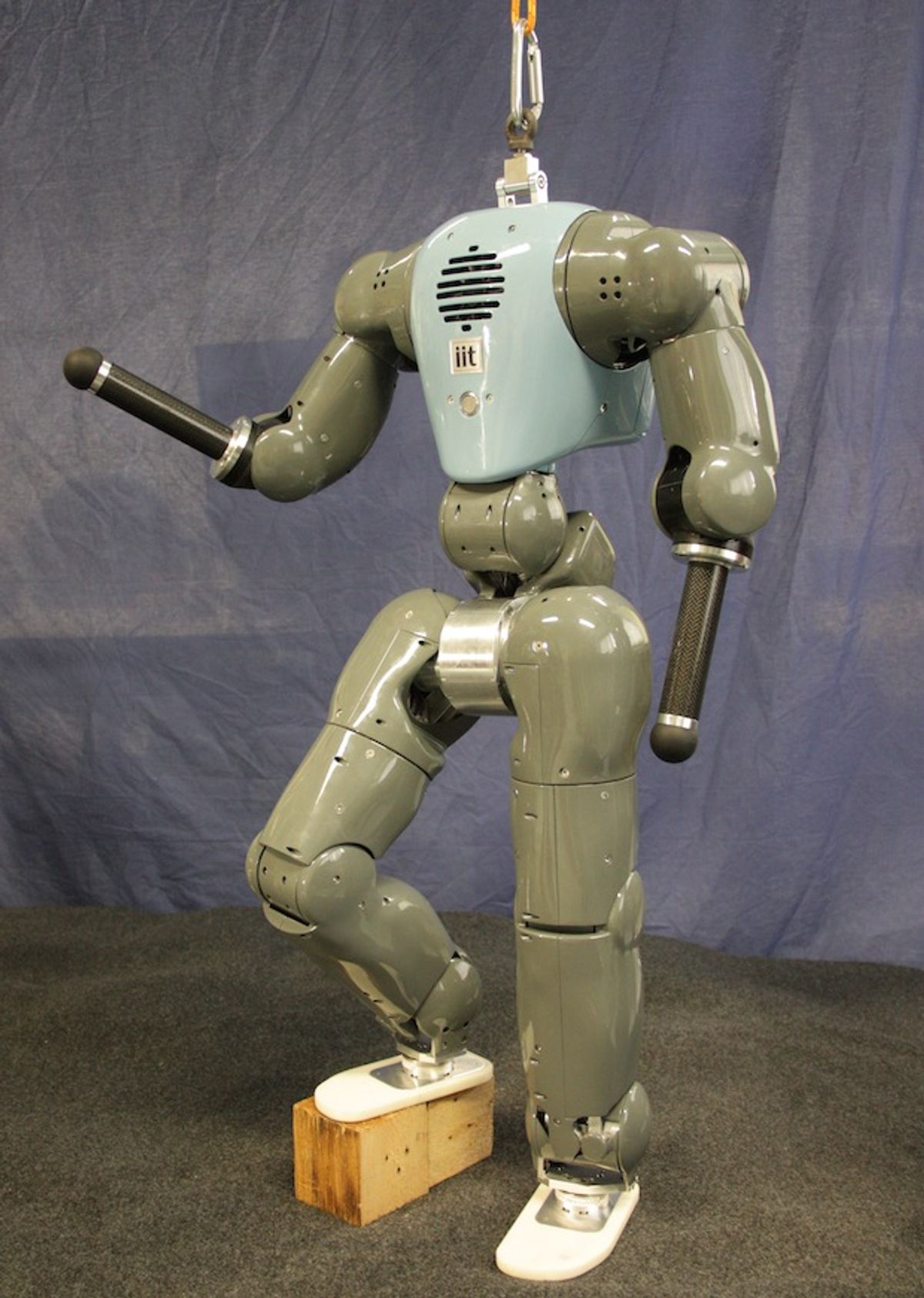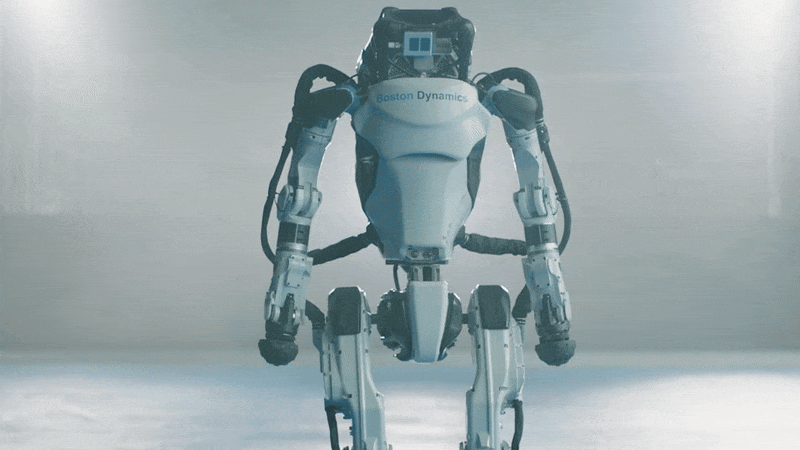Most humanoid robots developed over the past few decades have had stiff joints, and that's a problem if they're ever going to interact with people. Their unyielding arms and legs could injury a person if they accidentally whack someone, or if they lose balance and fall down. Lately there's been a growing interest in developing robotic joints with variable stiffness, which would improve their safety, but so far few groups have built a complete robot. Now a team from the Italian Institute of Technology (IIT) is approaching that goal with their robot COMAN (COmpliant huMANoid).
Modeled on a four-year-old child, COMAN is 94.5 cm tall (from foot to neck) and weighs 31.2 kg. It features 25 degrees of freedom (DOF), and a combination of stiff and compliant joints (see diagram below). The compliant joints (14 DOF) rely on series elastic actuators. These actuators—a custom design created by the IIT team—are applied to the the flexion/extension of the arms and legs, and are both small and modular, which makes them ideal for multi-DOF robots like humanoids. The researchers have also built custom torque sensors for each of the elastic joints, including a 6-axis force/torque sensor for the ankle joints. Development of the robot is funded, in part, by the European AMARSI project.
So what exactly does this compliance get you? The elastic actuators literally add a spring to COMAN's step: in walking experiments the robot's hardware naturally absorbed the ground reaction forces of each footstep "without additional control enforcement, which is difficult to be realized by the stiff actuated humanoids if no particular foot mechanism or active control is applied." And when they implemented a stabilization control method, the robot steadied itself on a moving platform and when it was knocked around. Watch:
COMAN's internal structure is made of titanium alloy, stainless steel, and aluminum alloy, covered by an ABS plastic exoskeleton. The images below show the location and structure of the series elastic actuators (SEA) on the robot's hips, knees, ankles, shoulders, and elbows.
In the course of developing their own compliant humanoid, the team also devised a method for determining the optimal joint elasticity, which until now has largely been a time-consuming trial and error process with scant documentation. Their method provides a framework for other researchers exploring compliant robots and is based on resonance analysis and energy storage maximization criteria.
Some of the earlier robots to explore compliant joints include Waseda University's Wendy (1998) and Twendy-One (2007), service robots intended to assist the elderly. For safety reasons they featured compliant arms using specially developed joint mechanisms that were somewhat bulky. More recently, Meka Robotics has produced a humanoid torso with compliant arms, and Samsung's Roboray and the German Aerospace Center's DLR-Biped have torque-controlled legs. Rethink Robotics' Baxter also features compliant arms.
But the IIT team, which includes Nikos G. Tsagarakis, Stephen Morfey, Gustavo Medrano Cerda, Zhibin Li, and Darwin G. Caldwell, is among the first to build a compliant humanoid with both arms and legs. And if you're wondering why the robot is headless, dont' worry: there is a head in the works. And we hear the researchers have also completed a pair of hands. We look forward to seeing those new parts integrated into the robot soon.







